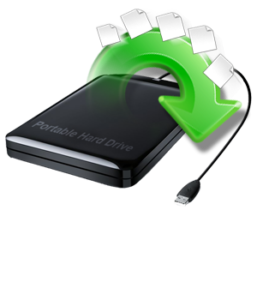RAID Recovery, Why Should I Use RAID 10
RAID 10, also indicated as RAID 1+0, is a RAID configuration that joins disk striping and disk mirroring to protect data. It requires stripes data across mirrored pairs and a minimum of four disks. As long as one disk in every mirrored pair is working, RAID recovery can be done. If two disks in the same mirrored set crash, all data will be lost because there is no parity in the striped sets.
RAID 10 gives redundancy and production and is the best option for I/O-intensive purposes — including web 65+servers, databases, email and performances that require high disk operations– and systems that need little to no downtime.
The high execution of RAID 10, and its capacity to perform multiple write options make it fitted to highly used, mission-critical database servers. Nevertheless, the four-disk minimum specification makes RAID 10 a costly option, and it may be slain for small businesses or consumer use.
The difference between RAID 10 and other RAID
The two-number construction of RAID 10/1+0 is referred to as a nested RAID configuration because it merges two RAID levels to improve the functionality. Other nested RAID levels are 01/0+1, 50/5+0,03/0+3, 100/10+0 and 60/6+0.
While RAID 1+0 is similar to RAID 0+1, the inverted order of the numbers shows the two RAID levels are layered in the reverse order. RAID 1+0 mirrors two drives at a time and then forms a striped set with the pair. RAID 0+1 forms pair stripe and then mirrors them. While the two RAID levels make use of the same number of drives, they are not similar.
According to producer specs and independent benchmarks, RAID 10 gives lower latency and higher throughput other RAID levels, except for RAID 0.
Often RAID 10 is used as a solution to performance issues. While RAID can indeed frequently be the solution you’re searching for, it isn’t a silver bullet. There may be many reasons for performance issues, and RAID is merely the solution to a number of them. See Chapter one for a reference of the performance features of each level. There’s absolutely no reason to use RAID for swap numerous reasons. The kernel itself can stripe interchanging on many devices if you give them the same priority in the \/etc \/fstab file. This set up lets their machine swap at parallel on seven SCSI devices. No need for RAID, since this was a kernel feature for quite long time.
While RAID 1+0 writes to pair disks at a time, it should not be considered a replacement for traditional data backup. If the OS is corrupted, the data on both disks are at risk for corruption, RAID 10 can protect against single drive failures, but a reliable data backup plan should also be in place otherwise you will need RAID recovery.
An additional reason to use RAID 10 for swap is high availability. If you set up a machine to boot on, e.g., a RAID-1 device, the machine ought to be able to survive a disk crash. However, if the system was swapping on a faulty device, you will for sure be going down. Swapping on a RAID-1 apparatus would solve this problem. There was a lot of discussions about whether swap was stable on RAID devices. That is a continuous debate because it depends highly on other aspects of their kernel as well. As of this writing, see swapping on RAID ought to be perfectly stable, you ought to however stress test the system yourself until you’re satisfied with the stability. You may set up RAID at a swap file on a file system on your RAID device, or you may set up a RAID apparatus as a swap partition, as you see fit.


